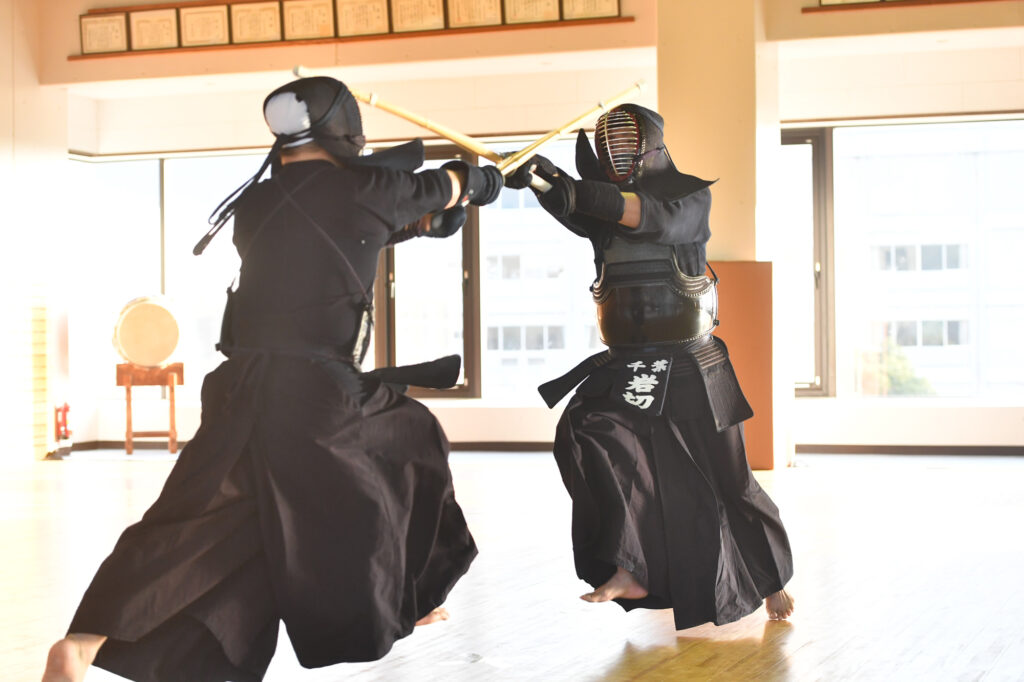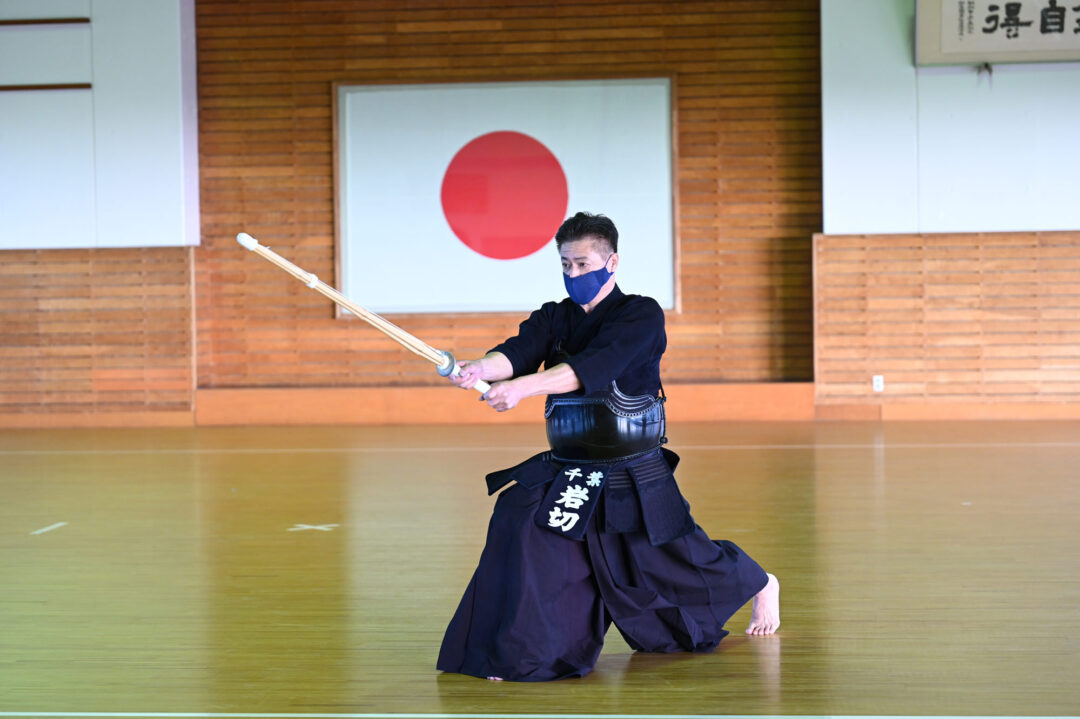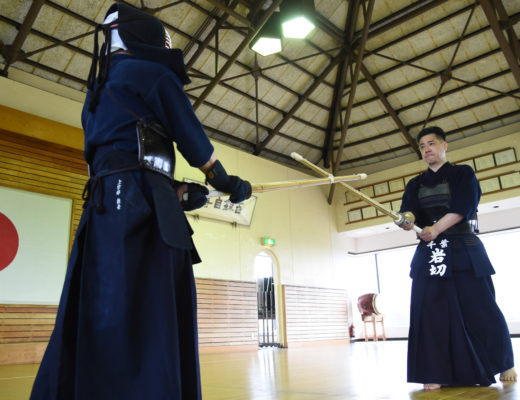Suburi, Uchikomi, Kirikaeshi. It is said that the shortest way to improve is to steadily repeat Kihon Keiko regularly, but a flawed method will cause problems. Kihon Keiko become basics only when they lead to applied techniques. Let’s learn from a top Kendo practitioner how to do high quality Kihon Keiko.
Composition = Teraoka Tomoyuki
Photo = Nishiguchi Kunihiko
Translation = Jouke van der Woude
Iwakiri Kimiharu Sensei, who teaches at the International Budo University, says that repeated practice of the basics is essential to the pursuit of Kendo. “You should learn the basics in your regular Keiko with a good Sensei,” he says, laying out attention points for Kihon Keiko.
Iwakiri Kimiharu, 8th Dan Kyoshi
Born in Miyazaki Prefecture in 1928. After graduating from Takachiho High School, he went on to study at the International Budo University and became a teacher there. His major achievements include participating in the All Japan TOZAI-TAIKO (East VS.West Japan) KENDO TAIKAI, the National Sports Festival, the National Teachers Kendo Championship, and the All Japan Interprefecture KENDO Championship. Currently, he is a professor at the International Budo University and the director of the Kendo Club.
Kihon repetition for future perspective
Improving the quality of Kihon Keiko is something that we must be aware of in order to build up the fundamental strength for our regular Keiko. At our university, we make sure to practice Suburi, footwork, and Kirikaeshi every day. At some point there were more than 400 students in four grades and it was sometimes difficult to secure enough space for practice. Kihon Keiko was not always possible then, but now we can take time for it in the morning and evening.
Why do we place so much importance on Kihon Keiko? The reason is that those who study Kendo at this university will be in a position to lead in the future. The purpose of an instructor is to pass on Kendo correctly, not just to teach how to win. I also tell my students at every opportunity to seek out ways to win, but the main idea of Kendo is to apply Seme to your opponent without disrupting your Kamae and strike. This is the essence of Kendo. Especially for students who have just entered the school, I tell them to “go strike Men and get struck” in Keiko and in Shiai. This is because by being struck and countered by their Motodachi, teachers, and opponents, it is easier to understand what needs to be worked on and how important it is to master Kihon.
The four years of a student’s life may seem long, but it is over before you know it. In those four years, you need to create a path that leads to your future. If you can see it, you will not lose your direction after graduation. I believe that it is our duty as university instructors to provide our students with this path.
Nowadays, there are many different methodologies for Keiko. However, in our university, we only do the general ones, such as Suburi, footwork, Kirikaeshi, Kihon Keiko, Jigeiko, Kakarigeiko, and Oikomi. I believe that each student should think individually about the technical aspects beyond that. Therefore, I feel that it is necessary to focus on learning Kihon well in the regular Keiko where all students come together to improve.

Fighting superiors for fundamental strength
The rest of this article is only available for Kendo Jidai International subscribers!





